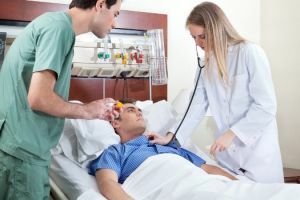 Stroke is a very dangerous disease due to blood circulation in the brain, which leads to severe consequences, including memory loss, speech and movement disorders, paralysis and others.
Stroke is a very dangerous disease due to blood circulation in the brain, which leads to severe consequences, including memory loss, speech and movement disorders, paralysis and others.
Unfortunately, the frequency of strokes is very high, and as doctors say, this disease "gets younger" every year. That is, if earlier people were primarily exposed to this disease after 60 years, today people who have reached the age of forty or even younger are at risk.
As a result of a stroke, a person may remain disabled, and need help outside the rest of his life, in which case an apoplectic stroke becomes not only a tragedy for the patient himself, but a catastrophe for his entire family.
Stroke requires not only emergency care, adequate treatment, but also long-term rehabilitation. This process takes a very long time and is carried out in stages.
The forecast for stroke directly depends on the extent of the brain damage, the quality of the emergency care provided, the speed of delivery of the patient to the clinic, the correctness and volume of rehabilitation measures.
How much quality and lengthy life after a stroke will largely depend on a person's desire to quickly recover and begin to live anew, and very much depends on the family and friends who must show great patience and make the utmost efforts to provide the patient with the necessary care during the periodrehabilitation.
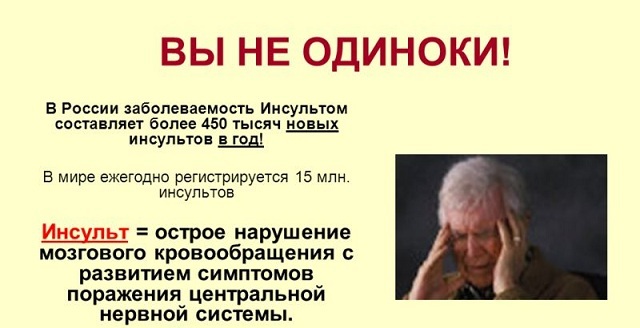
Contents
- Despondent statistics
- Beneficial factors and not very. ..
- The first days after the attack
- Physiotherapy as a way of life
- Speech recovery
- Memory recovery
- Power issue
- Time for healing
- What to do after a stroke
Depressing statistics
According to medicine, after stroke in the first month, death occurs in 15-25% of people. In half of these cases, the lethal outcome is due to a secondary cerebral edema. In other cases, death occurs due to a number of serious complications, such as:
- heart disease;

- kidney failure;
- pneumonia.
Many people are wondering what the life expectancy after a stroke is, it's impossible to answer this question unambiguously, since there is no such statistic and everything is very individual. The forecast depends on a number of factors.
Statistics show that mortality after hemorrhagic stroke is 65%.Of those who suffered an apoplectic stroke, 35% of people can live more than one year.
In ischemic stroke, the prognosis is more favorable. The survival rate is 75%.
The duration and quality of life of the post-stroke patient depends on the physical health of the person, and the lifestyle that the patient led, as well as the presence of any serious chronic diseases.
Very much depends on the rehabilitation regime and on whether the causes of the pathology were completely eliminated.
Proper nutrition and adequate medication, abstinence from smoking and drinking alcohol, and constant work on improving the functioning of your body are guaranteed to increase the chances of maximum recovery and a good life expectancy.

According to specialists, about 30% of patients in the case of a favorable course of the disease gradually partially or completely restore impaired functions.
More than 30% of people due to a stroke experience complete or partial loss of important skills, which leads to disability. Such a person needs constant care.
If a second blow happens, it will be much heavier than the first. At the same time the patient's condition periodically worsens, the treatment process is delayed, and very rarely it is possible to completely restore the impaired functions.
The probability of a second stroke in the first year is very high. Secondary stroke in almost 70% of cases leads to death. This is why strict preventive measures should be taken in order to prevent the risk of recurrence of pathology.
Favorable factors and not very. ..
Speaking about recovery after a stroke, it is necessary to note favorable and unfavorable factors that play an important role.
Adverse factors include:
- a large lesion of the brain;
- localization of lesions in zones responsible for speech and motor skills;
- poor blood circulation around the lesion;
- old age;
- emotional disturbances.
Favorable factors:
- timely start of restoration activities;
- previously spontaneous function recovery.
First days after an attack
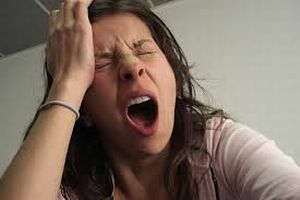 First of all, after a stroke, a set of therapeutic measures is carried out, the purpose of which is to maintain the cardiovascular and respiratory system. In the first few days the patient should be in the department of intensive neurology or acute stroke department.
First of all, after a stroke, a set of therapeutic measures is carried out, the purpose of which is to maintain the cardiovascular and respiratory system. In the first few days the patient should be in the department of intensive neurology or acute stroke department.
Measures will be carried out here to monitor the functioning of the heart, blood vessels and respiratory organs. First of all, the following is performed:
- correction of water-electrolyte balance;
- removal of cerebral edema.
The patient must comply with strict bed rest. To prevent the formation of pressure sores from prolonged lying, it is necessary that the mattress is flat, and the sheet does not form folds. The body must be treated with camphor alcohol and talc, which absorbs moisture well.
If it is not possible to swallow food, the feeding is done using a probe. If a person is able to swallow, on the first day he is given juices and sweet tea. From the second day, the diet expands and you can eat light foods, for example, yoghurts, broths, vegetable and fruit purees. 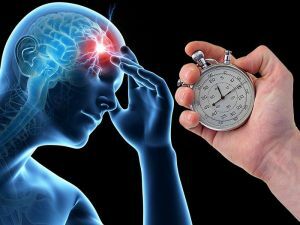
The duration and quality of life will depend on how many remaining nerve cells remain around the lesion in the early period after the stroke, and the speed and professionalism of the physicians will determine how effective further rehabilitation and rehabilitation of the patient will be.
To limit the size of the focus, the following drugs are prescribed:
- diuretics : Mannitol, Furosemide - reduce edema in the area of the affected tissue;
- neuroprotectors : Actovegin, Cerebrolysin.
Physiotherapy as a way of life
LFK is one of the main rehabilitation methods after a stroke. The task of therapy is to return the limbs of the previous strength, the volume of movements, restore standing, walking, balance, and self-service skills. The choice of exercises is made by a specialist taking into account the severity of the patient's condition:
- In case of deep disabilities, the rehabilitation of begins with passive gymnastics .The movements of the hands and feet are carried out by relatives or an instructor. In this case, the blood flow in the muscles is restored, and joints are developed. Such rotational movements should in no case cause discomfort or pain.
- Initially, the patient is put on the bed for a few minutes, gradually this time should increase .Then he is taught to stand. When the condition begins to improve, the patient learns to sit, get up and walk already without help. If necessary, you can use a support - a chair or a stick.
- The function of the hands is restored using special simulators and expanders for the brush. Such adaptations well affect the functions of the muscles of the hand and the return of skills to perform simple small movements and even letters. It will be very useful in the complex with gymnastics hand massage, which helps improve muscle tone and reduce spasticity.

Speech Recover
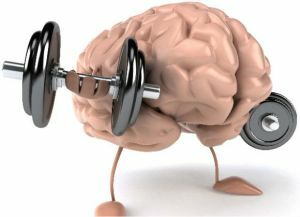 Very often stroke occurs in stroke. A person may experience difficulties in pronunciation, memorization of words, as well as in understanding someone else's speech. Violations can be completely different. The process of restoration of speech ability occurs with the participation of a qualified speech therapist, and may take several years.
Very often stroke occurs in stroke. A person may experience difficulties in pronunciation, memorization of words, as well as in understanding someone else's speech. Violations can be completely different. The process of restoration of speech ability occurs with the participation of a qualified speech therapist, and may take several years.
After a stroke, the functions of the muscles of the face and tongue may be disrupted. The speech of such a person becomes slow, deaf and illegible.
Speech therapist conducts exercises, during which the tongue and muscles are trained. They are best performed in front of a mirror. Classes should be regular.
Also, the patient himself can perform the following:
- fold the lips into a tube;
- to imitate a grin;
- to extend the language to the maximum length;
- bite the lower and upper lip in turn.
In addition to speech disorders, very often a person experiences difficulties in the process of swallowing and chewing food due to damage to the facial muscles. That is, a person can simply not feel food in his mouth.
Special exercises are used to restore the swallowing function, which activate the muscular strength and improve the motor skills of the lips and tongue.
In order for the swallowing process to be less painful, it is necessary to feed the patient with such food that it is easy to chew and swallow. It should not be too hot or cold. When eating, the patient should be in a sitting position.
Recovering memory
Restoring memory is done through constant training with simple exercises. For example: 
- Learning of light children's poems .First you need to remember the line, then the stanza. Gradually, the size of the poem can increase. It is good that in the process of memorizing the patient bends his fingers, so additional associations will be formed.
- Reproduction of past events .The patient can describe the events of the past day or more long-standing events. It is imperative that memories are only positive.
- As memory is restored, you can proceed to solving crossword puzzles and memorizing small texts of .Exercises can be conducted in any setting, for example, at lunch or during a walk.
The issue of nutrition
The stroke diet plays a huge role. If a person has excess weight, or a high level of glucose in the blood is detected, a diet is prescribed.
It is very important to limit the intake of salt, sugar, fats and cholesterol, which adversely affect the condition of the vessels. Food should be rich in fiber, minerals and vitamins. It is very important to eat in small portions and at least four times a day.
What should not be eaten:
- pork meat;
- greasy fish;
- smoked products and sausages;

- fried meat;
- fatty dairy products;
- grapes;
- beans;
- strong tea;
- coffee;
- fizzy drinks;
- alcohol.
Time for healing
This is a very urgent issue that takes both the victim himself and his family. Time is determined by a number of factors, which include:
- degree of brain damage;
- individual ability of the body to recover;
- a program of rehabilitation measures that have been applied;
- aspiration of the patient to recovery.
Very often treatment gives a good result after a couple of months. However, it is possible that it will not be possible to restore the simplest skills until several years later.
What to do after a stroke
It is very important to follow such simple rules: 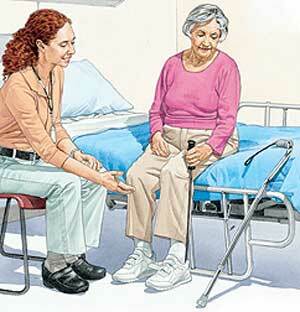
- is regularly monitored by your doctor;
- to give up all bad habits and unhealthy foods;
- never stop doing exercise exercises;
- to visit sanatoriums and resorts;
- more to walk;
- to avoid stress and heavy physical exertion.
Stroke is not a verdict. Adequate treatment, properly selected methods of rehabilitation and implementation of all medical prescriptions allow to speed up the process of recovery and return to a full life.
It is also necessary to recall once again the importance of the positive attitude of the victim and the provision of psychological help from relatives.


